The Aviation Food Truck is a vital component in the complex network of airport operations, specifically tasked with the safe and hygienic transport of in-flight catering from production facilities to aircraft. Without the specialized design and functionality of the Aviation Food Truck, maintaining the integrity of food products—critical for passenger health, regulatory compliance, and airline reputation—would be a daunting challenge, exposing airlines to significant risks of contamination, delays, and reputational damage.
In the fast-paced world of aviation, where thousands of passengers rely on in-flight meals daily, the journey of food from kitchen to cabin is a meticulously orchestrated process. The Aviation Food Truck serves as the linchpin in this journey, bridging the gap between catering facilities and aircraft. These specialized vehicles are not mere transport units; they are mobile hygiene chambers, engineered to preserve food quality, control temperatures, and prevent cross-contamination. As airports handle millions of meals annually, the role of the Aviation Food Truck in upholding food safety standards cannot be overstated.
The Critical Role of Aviation Food Trucks in In-Flight Catering
In-flight catering is a multi-billion-dollar industry, with airlines and catering companies striving to deliver meals that are not only delicious but also safe for consumption. The Aviation Food Truck is the unsung hero that ensures this safety from the moment meals leave the production line until they are loaded onto the aircraft. Unlike regular food transport vehicles, the Aviation Food Truck is designed to meet the stringent requirements of aviation authorities, which far exceed those of standard food service regulations.
One of the primary functions of the Aviation Food Truck is temperature control. Perishable foods, such as meats, dairy products, and prepared meals, must be kept at specific temperatures to prevent bacterial growth. The Aviation Food Truck is equipped with advanced refrigeration and heating systems that maintain these temperatures within a narrow range—typically between 0°C and 4°C for cold foods and above 60°C for hot foods—throughout the transport process. This temperature control is monitored and recorded by the Aviation Food Truck’s onboard systems, providing a traceable record that is essential for regulatory compliance.
Another key role of the Aviation Food Truck is preventing cross-contamination. In-flight meals often include a variety of dietary options, including vegetarian, vegan, gluten-free, and allergen-free meals. The Aviation Food Truck is designed with separate compartments and storage areas to keep these different meal types isolated, reducing the risk of allergen cross-contact. Additionally, the interior surfaces of the Aviation Food Truck are made from non-porous, easy-to-clean materials, such as stainless steel, which prevent the buildup of bacteria and facilitate thorough sanitization between uses.
The Aviation Food Truck also plays a crucial role in ensuring timely delivery. In-flight catering operates on tight schedules, with meals needing to be loaded onto aircraft within specific windows to avoid flight delays. The Aviation Food Truck is designed for efficiency, with features such as hydraulic lifts that align with aircraft galleys, allowing for quick and seamless loading. This efficiency not only prevents delays but also reduces the time that food spends in transit, minimizing the risk of temperature fluctuations and quality degradation.

Regulatory Standards Governing Aviation Food Trucks
The operation of Aviation Food Trucks is governed by a complex web of international, national, and local regulations, all aimed at ensuring the safety of in-flight catering. These regulations cover everything from vehicle design and maintenance to temperature control and hygiene protocols. Understanding these standards is essential for anyone involved in the operation or management of Aviation Food Trucks.
At the international level, the International Air Transport Association (IATA) has established guidelines for in-flight catering, including specific requirements for the transport of food. These guidelines emphasize the need for Aviation Food Trucks to be designed and maintained to prevent contamination, with adequate temperature control systems and proper sanitization procedures. The World Health Organization (WHO) also provides recommendations for food safety in aviation, which many countries adopt as part of their national regulations.
National aviation authorities, such as the Federal Aviation Administration (FAA) in the United States, the European Union Aviation Safety Agency (EASA) in Europe, and the Civil Aviation Administration of China (CAAC), have their own set of rules governing Aviation Food Trucks. For example, the FAA requires that Aviation Food Trucks be inspected regularly to ensure that their refrigeration and heating systems are functioning correctly, and that their interiors are kept clean and free from pests. EASA goes a step further, mandating that Aviation Food Trucks be equipped with temperature monitoring devices that record and store data for at least 90 days, allowing for traceability in the event of a food safety incident.
Local health departments also play a role in regulating Aviation Food Trucks, as they are considered part of the food service industry. These departments may conduct regular inspections to ensure that the Aviation Food Truck meets local health codes, which often include requirements for handwashing facilities, waste disposal, and staff training. Failure to comply with these regulations can result in fines, temporary shutdowns, or even the revocation of operating licenses, making regulatory compliance a top priority for operators of Aviation Food Trucks.
Design Features of a Hygienic Aviation Food Truck
The design of the Aviation Food Truck is a result of extensive research and development, with every feature aimed at ensuring the hygienic transport of in-flight catering. From the materials used in construction to the layout of storage compartments, every aspect of the Aviation Food Truck is carefully considered to minimize the risk of contamination and maintain food quality.
One of the most important design features of the Aviation Food Truck is its insulation. The walls, floors, and ceilings are constructed with high-quality insulation materials that prevent heat transfer, ensuring that the internal temperature remains stable even in extreme external conditions. This is particularly important for airports located in hot or cold climates, where temperature fluctuations could otherwise compromise the safety of perishable foods. The insulation also helps to reduce the workload on the refrigeration and heating systems, improving energy efficiency and extending the life of the equipment.
The interior layout of the Aviation Food Truck is another critical design element. The space is typically divided into separate zones for hot and cold foods, with each zone equipped with its own temperature control system. This separation prevents temperature cross-contamination, ensuring that hot foods remain hot and cold foods remain cold. The storage compartments within each zone are designed to be adjustable, allowing for flexibility in accommodating different sizes and types of catering containers. They are also designed to be easy to access, reducing the time that doors are open and minimizing temperature fluctuations.
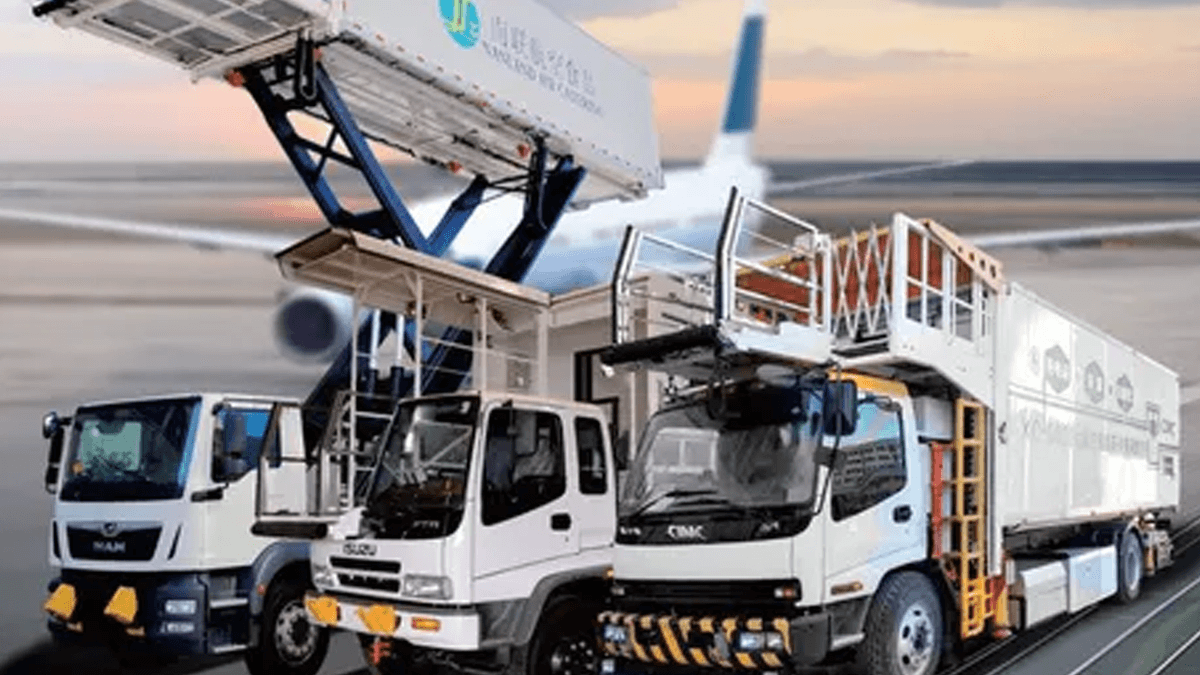
The materials used in the interior of the Aviation Food Truck are chosen for their hygiene properties. Stainless steel is the material of choice for surfaces such as walls, floors, and storage shelves, as it is non-porous, resistant to corrosion, and easy to clean and sanitize. Unlike other materials, stainless steel does not absorb food particles or bacteria, reducing the risk of cross-contamination. The floors are often fitted with non-slip surfaces to prevent accidents during loading and unloading, while the walls may have rounded corners to eliminate hard-to-clean crevices where bacteria can accumulate.
The Aviation Food Truck is also equipped with advanced temperature control systems. These systems include refrigeration units for cold foods, which use environmentally friendly refrigerants to maintain temperatures between 0°C and 4°C, and heating systems for hot foods, which use electric or gas heaters to keep temperatures above 60°C. The temperature control systems are monitored by digital thermostats, which display real-time temperatures and sound alarms if there is a deviation from the set range. Some advanced Aviation Food Truck models also feature remote monitoring capabilities, allowing operators to check temperatures from a central location and receive alerts if there is a problem.
Other design features of the Aviation Food Truck include air filtration systems, which remove dust and contaminants from the air inside the vehicle, and ultraviolet (UV) light systems, which help to sanitize surfaces and air. The doors of the Aviation Food Truck are designed to be airtight, with rubber gaskets that prevent the ingress of external air and pests. They may also be fitted with windows to allow operators to check on the contents without opening the door, reducing temperature fluctuations.
Maintenance and Sanitization Protocols for Aviation Food Trucks
Even the most well-designed Aviation Food Truck will fail to maintain food safety if not properly maintained and sanitized. Regular maintenance and cleaning are essential to ensure that the vehicle’s systems are functioning correctly and that its interior remains free from bacteria and contaminants.
Daily sanitization is a key part of the maintenance routine for Aviation Food Trucks. At the end of each shift, the interior of the vehicle is thoroughly cleaned using food-safe detergents and sanitizers. All surfaces, including walls, floors, shelves, and storage compartments, are wiped down to remove food particles and bacteria. Special attention is paid to high-touch areas, such as door handles, thermostats, and loading ramps, which are more likely to harbor bacteria. The cleaning process is followed by sanitization, which involves the use of chemicals or heat to kill any remaining bacteria. Some Aviation Food Trucks are equipped with automated sanitization systems, such as steam cleaners or UV light systems, which can sanitize the interior more efficiently and thoroughly than manual methods.
Regular maintenance of the temperature control systems is also essential. The refrigeration and heating units should be inspected daily to ensure that they are functioning correctly, with filters cleaned or replaced as needed. The refrigerant levels in the refrigeration units should be checked regularly, and any leaks should be repaired immediately to prevent system failure. The thermostats and temperature sensors should be calibrated regularly to ensure accurate temperature readings, as incorrect readings can lead to food safety incidents.
The structural components of the Aviation Food Truck also require regular maintenance. The insulation should be inspected for signs of damage, such as cracks or gaps, which can compromise temperature control. The doors and their gaskets should be checked to ensure that they are sealing properly, and any worn or damaged gaskets should be replaced. The hydraulic lifts and other mechanical systems used for loading and unloading should be inspected and lubricated regularly to prevent breakdowns, which can cause delays and increase the risk of food safety issues.
Preventive maintenance is also important for the Aviation Food Truck. This involves scheduling regular inspections and servicing by qualified technicians, who can identify and address potential issues before they become major problems. Preventive maintenance may include checking the electrical system, inspecting the brakes and tires, and testing the emergency systems, such as fire extinguishers and first aid kits. By investing in preventive maintenance, operators of Aviation Food Trucks can reduce the risk of breakdowns, extend the life of the vehicle, and ensure that it continues to meet regulatory standards.
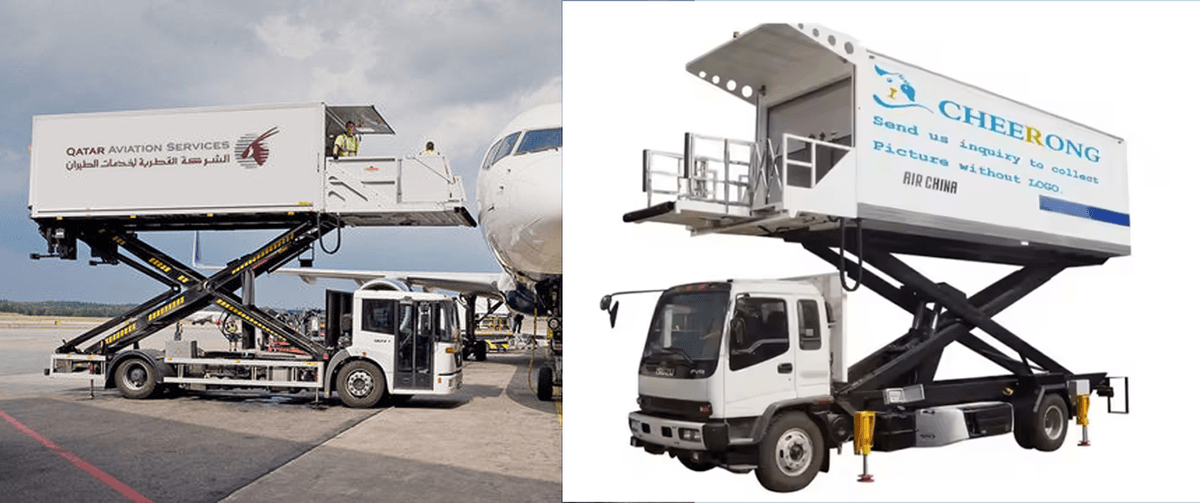
Training for Aviation Food Truck Operators
The safe and hygienic operation of the Aviation Food Truck depends not only on its design and maintenance but also on the training and expertise of its operators. Properly trained operators are essential for ensuring that food is transported safely, that temperature control systems are monitored correctly, and that sanitization protocols are followed.
Training for Aviation Food Truck operators typically covers a range of topics, including food safety principles, temperature control, vehicle operation, and emergency procedures. Food safety training is particularly important, as operators need to understand the risks of foodborne illness and how to prevent contamination. This includes learning about proper hand hygiene, the importance of separating raw and cooked foods, and the dangers of temperature abuse. Operators also need to be familiar with the specific requirements of in-flight catering, such as the handling of allergen-free meals and the need to maintain traceability.
Temperature control training is another key component of operator training. Operators need to know how to set and monitor the temperature control systems, how to respond to temperature alarms, and how to record temperature readings accurately. They also need to understand the importance of minimizing door openings and ensuring that the vehicle is loaded and unloaded quickly to prevent temperature fluctuations. Some training programs include hands-on practice with the temperature control systems, allowing operators to become familiar with their operation and troubleshooting.
Vehicle operation training is essential for ensuring the safe and efficient movement of the Aviation Food Truck around the airport. Operators need to be familiar with the size and handling characteristics of the vehicle, as well as the rules and regulations governing airport traffic. This includes learning about speed limits, designated routes, and the need to yield to aircraft and other vehicles. Operators also need to be trained in the use of the hydraulic lifts and other loading equipment, to ensure that meals are loaded and unloaded safely and efficiently.
Emergency procedures training is also important for Aviation Food Truck operators. They need to know how to respond to emergencies such as vehicle breakdowns, temperature control failures, and fires. This includes learning how to use fire extinguishers, how to contact emergency services, and how to protect the food cargo in the event of an emergency. Operators should also be trained in first aid, to ensure that they can provide assistance in the event of an accident or injury.
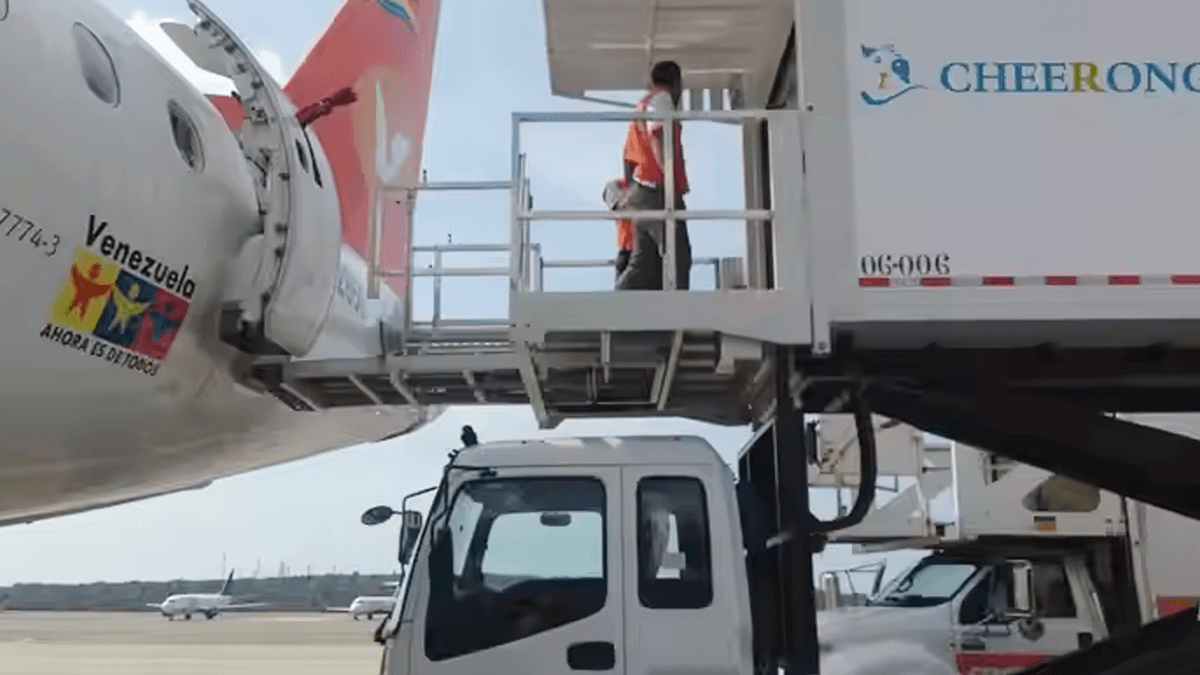
Refresher training is essential for maintaining the skills and knowledge of Aviation Food Truck operators. Food safety regulations and best practices are constantly evolving, and operators need to stay up-to-date with the latest developments. Refresher training may be conducted annually or as needed, and may include updates on regulatory changes, new technologies, and lessons learned from food safety incidents.
Technology Innovations in Aviation Food Trucks
The aviation industry is constantly evolving, and the Aviation Food Truck is no exception. Technological innovations are driving improvements in food safety, efficiency, and sustainability, making the Aviation Food Truck an even more critical component of in-flight catering operations.
One of the most significant technological innovations in Aviation Food Trucks is the integration of Internet of Things (IoT) technology. IoT-enabled Aviation Food Trucks are equipped with sensors that monitor temperature, humidity, and door openings in real-time. This data is transmitted to a central dashboard, where operators and managers can monitor the status of the vehicle and its cargo from anywhere. IoT technology also allows for predictive maintenance, as sensors can detect potential issues with the temperature control systems or other components before they fail, enabling proactive repairs. This not only reduces the risk of food safety incidents but also minimizes downtime and improves operational efficiency.
Another technological innovation is the use of advanced refrigeration systems. Modern Aviation Food Trucks are equipped with energy-efficient refrigeration units that use environmentally friendly refrigerants, such as hydrofluorocarbons (HFCs) with low global warming potential. These systems are also more reliable than older models, with better temperature control and longer lifespans. Some refrigeration systems are even equipped with variable speed compressors, which adjust their output based on the cooling demand, reducing energy consumption and noise levels.
Automation is also playing a role in improving the efficiency of Aviation Food Trucks. Automated loading and unloading systems, such as robotic arms or conveyor belts, can reduce the time and labor required to load and unload meals, minimizing the risk of temperature fluctuations and contamination. These systems are particularly useful for large airports with high volumes of in-flight catering, where manual loading and unloading can be time-consuming and error-prone.
Sustainability is another area where technology is driving innovation in Aviation Food Trucks. Many manufacturers are now producing electric or hybrid Aviation Food Trucks, which reduce emissions and noise pollution. These vehicles are powered by batteries or a combination of batteries and fossil fuels, and can be charged using renewable energy sources such as solar power. Some Aviation Food Trucks are also equipped with energy recovery systems, which capture energy from braking or other operations and use it to power the vehicle’s systems, improving energy efficiency.
Blockchain technology is also being explored for use in Aviation Food Trucks, particularly for traceability. By recording every step of the food transport process on a blockchain, from production to loading onto the aircraft, stakeholders can track the movement of food and ensure that it has been handled safely. This can be particularly useful in the event of a food safety incident, as it allows for quick identification of the source of the problem and facilitates targeted recalls.
Case Studies: Successful Implementation of Aviation Food Trucks
To understand the real-world impact of Aviation Food Trucks, let’s examine a few case studies of airports and catering companies that have successfully implemented these vehicles to improve food safety and efficiency.
Case Study 1: Major International Airport
A major international airport with over 100 million passengers annually was struggling with food safety incidents related to in-flight catering. Investigations revealed that the primary cause was temperature fluctuations during transport from the catering facility to the aircraft, due to outdated transport vehicles with poor insulation and unreliable temperature control systems. The airport decided to invest in a fleet of state-of-the-art Aviation Food Trucks, equipped with advanced refrigeration and heating systems, IoT-enabled temperature monitoring, and improved insulation.
Within six months of implementing the new Aviation Food Trucks, the number of food safety incidents dropped by 75%. The IoT monitoring system allowed operators to identify and address temperature fluctuations in real-time, while the improved insulation ensured that temperatures remained stable even in extreme weather conditions. The automated loading systems also reduced loading times by 30%, minimizing the risk of temperature changes during this critical phase. The airport reported significant cost savings due to reduced food waste and fewer regulatory fines, making the investment in the new Aviation Food Trucks highly worthwhile.
Case Study 2: Regional Airport
A regional airport with a smaller fleet of aircraft was facing challenges with timely delivery of in-flight catering, which was causing flight delays. The airport’s existing transport vehicles were not designed for efficient loading and unloading, and their temperature control systems were unreliable, leading to frequent delays and occasional food safety issues. The airport partnered with a catering company to introduce a fleet of customized Aviation Food Trucks, designed to meet the specific needs of the airport.
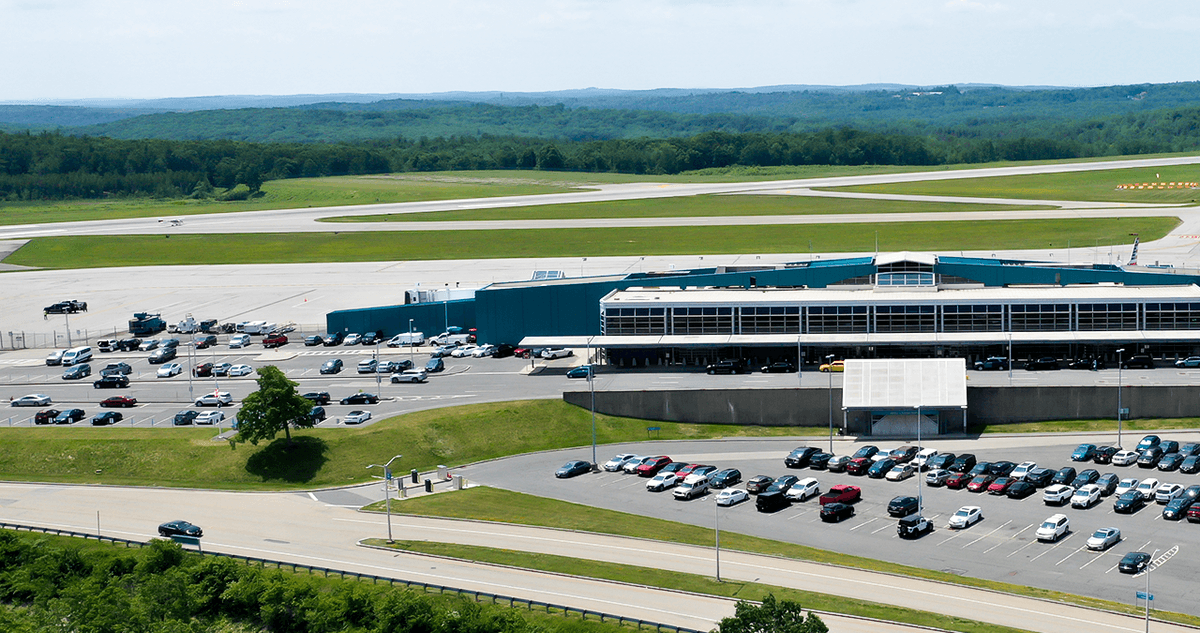
The new Aviation Food Trucks featured hydraulic lifts that aligned perfectly with the aircraft galleys, reducing loading times by 50%. The advanced temperature control systems ensured that food remained at safe temperatures, eliminating food safety incidents. The airport also implemented a scheduling system that optimized the routes of the Aviation Food Trucks, reducing travel time between the catering facility and the aircraft. As a result, flight delays related to catering dropped by 90%, improving passenger satisfaction and reducing operational costs.
Case Study 3: Catering Company
A large catering company that supplies meals to multiple airlines was struggling with maintaining traceability of its in-flight catering. In the event of a food safety incident, the company found it difficult to track which flights had received the affected meals, leading to costly and time-consuming recalls. The company decided to invest in Aviation Food Trucks equipped with blockchain technology, which records every step of the transport process, including the origin of the food, the temperature during transport, and the aircraft it was loaded onto.
The implementation of blockchain-enabled Aviation Food Trucks transformed the company’s traceability system. In the event of a food safety incident, the company could quickly identify which flights had received the affected meals, allowing for targeted recalls instead of blanket recalls. This reduced the cost and disruption caused by recalls, while also improving customer confidence in the company’s products. The blockchain technology also provided valuable data on the transport process, allowing the company to identify areas for improvement and optimize its operations.
Common Challenges in Aviation Food Truck Operations
Despite their importance, Aviation Food Trucks face a number of challenges in their day-to-day operations. These challenges can impact food safety, efficiency, and compliance, and require proactive management to overcome.
One of the most significant challenges is temperature control during extreme weather conditions. Airports in regions with scorching heatwaves or freezing winters can put immense pressure on the Aviation Food Truck’s refrigeration and heating systems. In high temperatures, the exterior of the Aviation Food Truck can absorb heat, making it harder for refrigeration units to maintain cold zones. Conversely, in frigid conditions, heating systems may struggle to keep hot foods above the required 60°C threshold. Even with advanced insulation, prolonged exposure to extreme weather can cause temperature fluctuations, risking food safety. To mitigate this, operators often schedule more frequent temperature checks during extreme weather and may use auxiliary cooling or heating devices to support the Aviation Food Truck’s systems. Some modern Aviation Food Truck models also feature climate-adaptive technology that adjusts system performance based on external temperature, ensuring stability regardless of weather conditions.
Airport traffic congestion is another major hurdle. Airports are busy hubs with constant movement of aircraft, baggage tugs, fuel trucks, and other ground support vehicles. The Aviation Food Truck must navigate this chaos to reach its designated aircraft on time. Delays caused by congestion can extend the transport time of in-flight catering, increasing the risk of temperature deviations and missed loading windows. This not only threatens food safety but also disrupts flight schedules. To address this, many airports have implemented dedicated routes for the Aviation Food Truck, separate from high-traffic areas. Additionally, real-time traffic monitoring systems are used to reroute the Aviation Food Truck dynamically, avoiding bottlenecks. Coordination between airport authorities, airlines, and catering companies is also crucial to schedule Aviation Food Truck movements in sync with aircraft arrival and departure times, minimizing waiting times.
Equipment breakdowns pose a persistent challenge for Aviation Food Truck operations. The refrigeration, heating, hydraulic, and electrical systems of the Aviation Food Truck are subject to heavy use, and even minor malfunctions can have serious consequences. A faulty refrigeration unit, for example, can cause cold foods to warm up, leading to spoilage. Similarly, a broken hydraulic lift can delay loading, stranding meals in the Aviation Food Truck and potentially causing flight delays. Preventive maintenance is key to reducing breakdowns, but unexpected issues still occur. To mitigate risks, operators often equip the Aviation Food Truck with backup systems, such as secondary refrigeration units or manual override mechanisms for hydraulic lifts. They also maintain a fleet of standby Aviation Food Trucks that can be deployed immediately if a primary vehicle fails, ensuring that in-flight catering transport continues uninterrupted.
Cross-contamination risks remain a concern despite the Aviation Food Truck’s design features. Even with separate compartments, improper loading or handling can lead to allergen transfer or bacterial spread. For example, if a catering container holding allergen-containing meals is placed next to allergen-free meals in the Aviation Food Truck without proper separation, cross-contact can occur. Similarly, if staff handling raw foods enter the Aviation Food Truck without sanitizing their hands, they may contaminate ready-to-eat meals. To combat this, strict loading protocols are enforced, requiring clear labeling of meal types and designated storage areas within the Aviation Food Truck. Staff undergo rigorous training on proper handling procedures, including hand hygiene and the use of personal protective equipment (PPE) such as gloves and aprons. Regular audits of loading practices are also conducted to ensure compliance and identify areas for improvement.
Regulatory compliance is an ongoing challenge, as standards for the Aviation Food Truck are constantly evolving. Keeping up with changes in international, national, and local regulations can be overwhelming for operators. New requirements for temperature monitoring, sanitization, or vehicle design may necessitate upgrades to the Aviation Food Truck or changes in operational procedures. Failure to comply can result in fines, penalties, or loss of operating licenses. To stay ahead, operators of the Aviation Food Truck invest in regulatory tracking systems that monitor updates to food safety and aviation regulations. They also participate in industry associations and training programs to gain insights into upcoming changes. Collaborating with regulatory authorities allows operators to provide feedback on proposed standards and ensure that the Aviation Food Truck can meet new requirements without compromising efficiency.
Strategies to Overcome Aviation Food Truck Operational Challenges
Addressing the challenges faced by the Aviation Food Truck requires a combination of proactive planning, technological innovation, and collaborative effort. Here are some effective strategies:
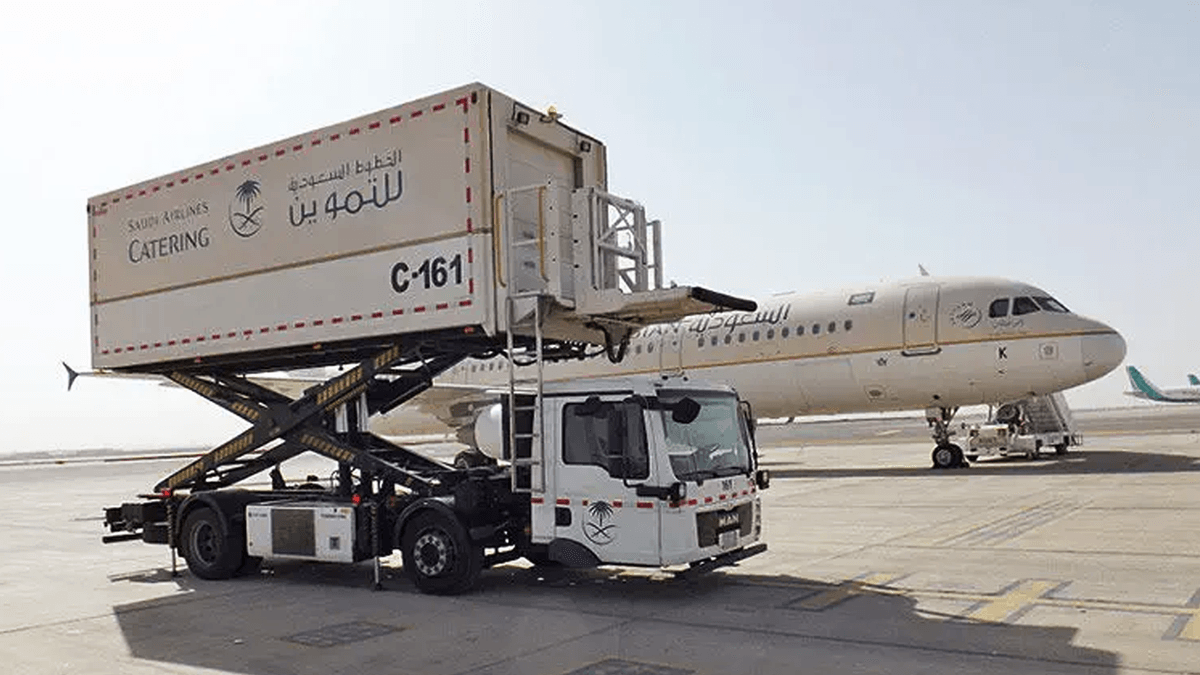
Investing in advanced technology is a cornerstone strategy. Upgrading the Aviation Food Truck with state-of-the-art systems can significantly enhance reliability and efficiency. For example, installing predictive maintenance sensors in the Aviation Food Truck’s critical components allows operators to detect early signs of wear and schedule repairs before breakdowns occur. IoT-enabled temperature monitoring systems provide real-time alerts, enabling immediate action if temperatures drift out of range. Automated loading systems reduce human error and speed up the loading process, minimizing the time the Aviation Food Truck’s doors are open. These technologies not only mitigate risks but also improve the overall performance of the Aviation Food Truck.
Implementing robust training programs for all staff involved in Aviation Food Truck operations is essential. Training should cover not only technical skills, such as operating the Aviation Food Truck’s systems and performing basic maintenance, but also soft skills like communication and problem-solving. Staff need to understand how to respond to unexpected challenges, such as traffic delays or equipment malfunctions, to ensure that food safety is maintained. Regular refresher courses keep staff updated on new regulations, technologies, and best practices. By empowering staff with knowledge and skills, operators can reduce errors and improve the resilience of Aviation Food Truck operations.
Establishing strong partnerships between stakeholders is another key strategy. Airlines, catering companies, airport authorities, and regulatory bodies must work together to optimize Aviation Food Truck operations. For example, sharing real-time data on aircraft schedules, catering production times, and airport traffic allows for better coordination of the Aviation Food Truck’s routes and loading times. Collaborative planning can also lead to the development of shared infrastructure, such as dedicated parking areas for the Aviation Food Truck or centralized maintenance facilities, reducing costs and improving efficiency. Regular meetings and forums provide a platform for stakeholders to address challenges collectively and implement solutions that benefit the entire industry.
Adopting a culture of continuous improvement is vital for long-term success. Operators of the Aviation Food Truck should regularly review their operations, analyze data on performance, and seek feedback from staff and stakeholders. This includes conducting post-incident reviews to identify root causes of issues, such as temperature deviations or delays, and implementing corrective actions. By continuously refining processes, upgrading equipment, and updating training programs, operators can ensure that the Aviation Food Truck remains at the forefront of food safety and efficiency.
Choosing the Right Aviation Food Truck for Your Operation
Selecting the right Aviation Food Truck is a critical decision that depends on a variety of factors, including the size of your operation, the types of meals you transport, and the specific requirements of your airport. Here are some key considerations to keep in mind:
Capacity and size are important factors to consider. The Aviation Food Truck must be large enough to carry the volume of in-flight catering required for your operation, but not so large that it is difficult to maneuver in tight airport spaces. Consider the number of flights you service daily and the average number of meals per flight when determining the capacity of the Aviation Food Truck. Also, ensure that the vehicle’s dimensions are compatible with airport infrastructure, such as loading docks and parking areas.
Temperature control capabilities are non-negotiable. The Aviation Food Truck must be able to maintain precise temperatures for both hot and cold foods, even in extreme weather conditions. Look for models with advanced refrigeration and heating systems that have a proven track record of reliability. Consider whether you need separate temperature zones for different types of meals and whether the system allows for easy adjustment of temperatures. Remote monitoring capabilities are also a plus, as they allow you to keep track of temperatures from a central location.
Durability and maintenance requirements should be evaluated. The Aviation Food Truck operates in a harsh environment, so it must be built to withstand heavy use, vibration, and exposure to the elements. Choose a model constructed from high-quality materials, such as stainless steel, that are resistant to corrosion and easy to clean. Consider the availability of replacement parts and the cost of maintenance when selecting a manufacturer. A reliable Aviation Food Truck with low maintenance requirements will save you time and money in the long run.
Technological features can greatly enhance the efficiency and safety of the Aviation Food Truck. Look for models with IoT connectivity, predictive maintenance sensors, and automated loading systems if these features align with your operational needs. Consider whether the Aviation Food Truck can integrate with your existing systems, such as catering management software or airport traffic monitoring systems. While advanced technology may increase the initial cost, it can provide significant returns in terms of improved performance and reduced downtime.
Regulatory compliance is a must. Ensure that the Aviation Food Truck meets all relevant international, national, and local regulations, including those governing temperature control, hygiene, and vehicle design. Ask the manufacturer for documentation proving compliance with standards set by organizations such as IATA, FAA, and EASA. Choosing a regulatory-compliant Aviation Food Truck will help you avoid fines and ensure that your operations are safe and legal.
Cost and return on investment (ROI) should be carefully analyzed. The initial cost of an Aviation Food Truck can vary widely depending on its features and capabilities. While it may be tempting to choose the cheapest option, consider the long-term costs, including maintenance, fuel or energy consumption, and potential losses due to food safety incidents or delays. A higher-quality Aviation Food Truck with advanced features may have a higher upfront cost but can provide a better ROI through improved efficiency, reduced downtime, and enhanced food safety.
Conclusion: The Indispensable Role of the Aviation Food Truck
The Aviation Food Truck is more than just a vehicle for transporting in-flight catering—it is a critical component of the aviation industry’s commitment to safety, efficiency, and passenger satisfaction. From ensuring that meals remain at safe temperatures to preventing cross-contamination and enabling timely deliveries, the Aviation Food Truck plays a vital role in every step of the in-flight catering journey.
As we have explored, the Aviation Food Truck is designed with a range of features to meet the stringent requirements of aviation authorities, including advanced temperature control systems, hygienic materials, and efficient loading mechanisms. Regular maintenance, staff training, and adherence to regulatory standards are essential to ensuring that the Aviation Food Truck operates at peak performance.
Despite the challenges faced by Aviation Food Truck operations, such as extreme weather, traffic congestion, and equipment breakdowns, innovative strategies and technologies are helping operators overcome these hurdles. From IoT-enabled monitoring systems to autonomous navigation, the future of the Aviation Food Truck is bright, with ongoing advancements set to further improve food safety, efficiency, and sustainability.
For airlines, catering companies, and airports, investing in a high-quality Aviation Food Truck is not just a business decision—it is an investment in the safety and satisfaction of passengers. By choosing the right Aviation Food Truck and implementing best practices for its operation, stakeholders can ensure that in-flight catering transport is reliable, hygienic, and efficient, contributing to the smooth operation of airports and the success of the aviation industry as a whole.
In the fast-paced world of aviation, where every detail matters, the Aviation Food Truck stands as a testament to the industry’s dedication to excellence. It is a symbol of the careful planning, technological innovation, and collaborative effort that goes into delivering a safe and enjoyable travel experience for passengers around the world.

